Adriacom I Business Services & Immigration
Montenegro Awaits - Let's Make it Yours.
Sea Gate Kotor
Charming Kotor has, since the 9th century, been defended by city walls of one form or another. Kotor Fortress (also known as San Giovanni or St. John’s Fortress) dates back even further – to Illyrian, pre-Roman times. To this day, substantial portions of Kotor’s City Walls remain, making Kotor have more intact walls than any other coastal town in Montenegro.
The walls are up to 20 meters high and go right up to the top of Kotor Fortress on Mount San Giovanni. They are the longest city walls in Montenegro, measuring 4,5 kilometers and including numerous bastions and city gates. These walls are extremely thick in some places, as becomes evident as soon as you enter through the Sea Gate, where they measure 16 meters.
The city walls are punctuated by two additional gates, the North Gate and the Gurdic Gate. These sole entrances into town protected from potential invaders and pirates, and were also used to collect tolls from merchants. The Sea Gate (also known as the ‘Main Gate‘) is the tallest and most elaborate of the three, and was built in 1555 during the period of Venetian rule over Kotor (1420 – 1797), and was previously only accessible by sea.
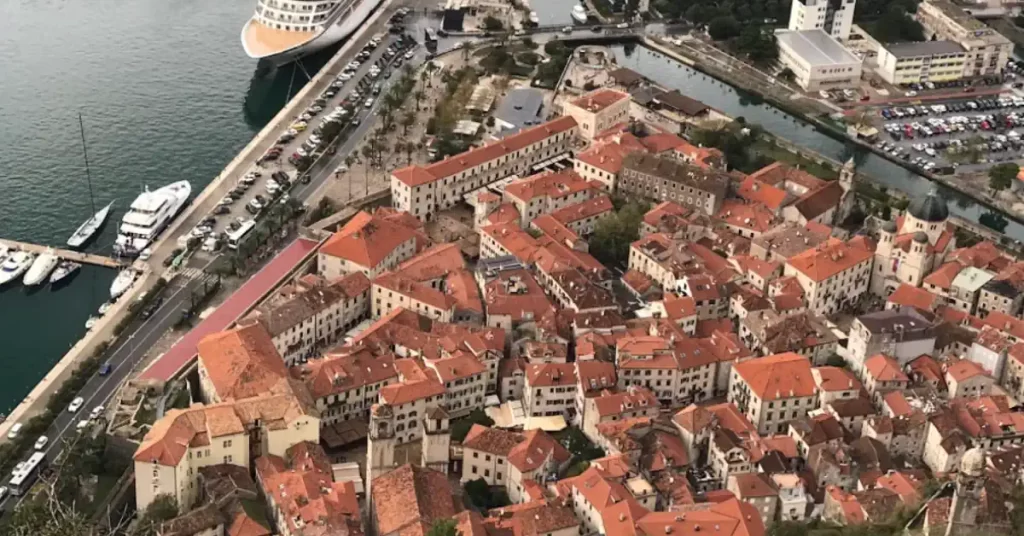
Kotor
Kotor is appealing throughout the entire year with a good range of restaurants, luxury boutique hotels, new trendy bars, and quaint cafes for people-watching.
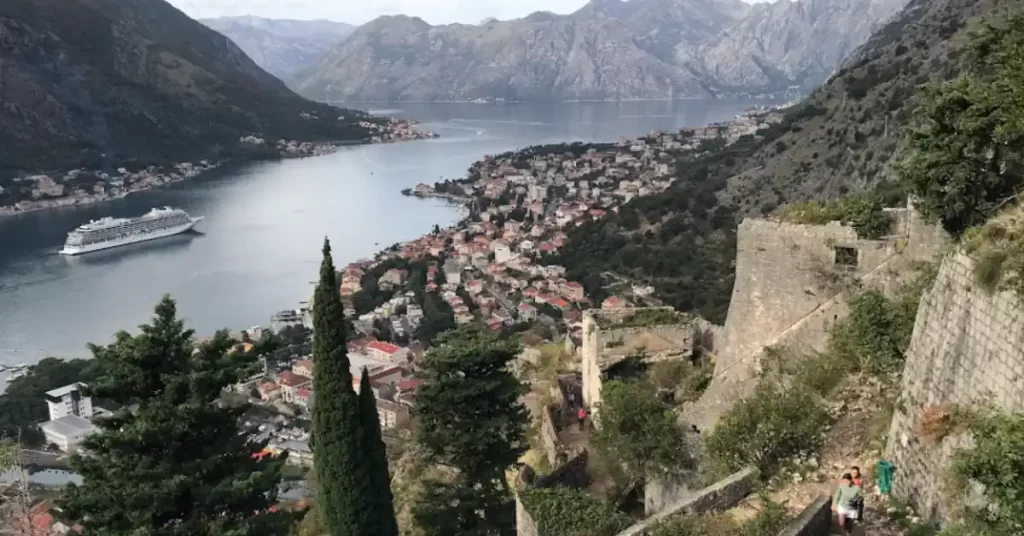
Kotor Fortress
With a history dating back many centuries, Kotor Fortress is one of Montenegro’s most striking landmarks, offering panoramic views of large parts of the bay.

Kotor City Walls
Kotor’s City Walls are listed as a UNESCO World Heritage Site. They are 4,5 kilometers long and contain a fortress, several bastions, towers, and gates.

The gate’s most notable features were the winged Lion of Venice, which adorned the plaque above the entrance, and two griffins holding the coat of arms. The Venetian-era carved insignias were replaced during the Second World War by socialist-style Yugoslav heraldry, texts, and symbols.
On the frieze, where once the Lion of Venice stood, you’ll see now a memorial tablet showing Kotor’s liberation date from Nazi occupation – November 21st, 1944. Where once you could admire two gryphons proudly holding up the city’s coat of arms, there’s now the Emblem of Yugoslavia, boasting six torches with a red star at its top.
A quote by Yugoslav strongman and partisan leader Josip Broz Tito was added beneath it. It reads “What belongs to others, we don’t want, what is ours, we will never surrender.” Tito was a communist revolutionary and leader of the Partisans, an anti-Axis resistance movement during WW II, and managed to free Yugoslavia from Italian and German occupation.
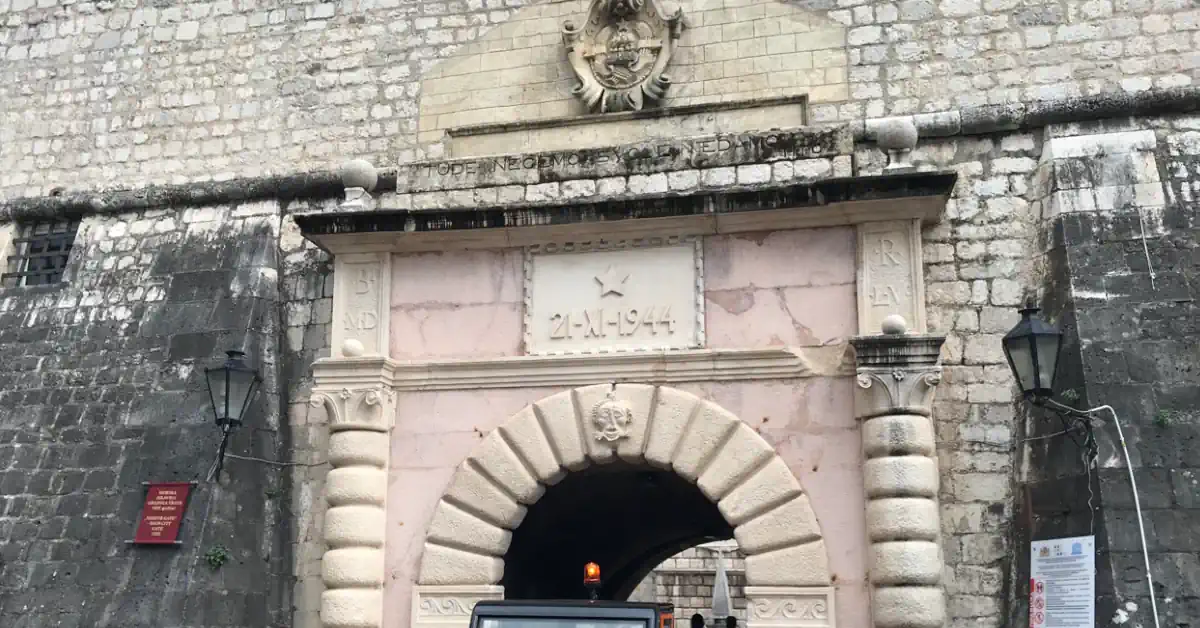
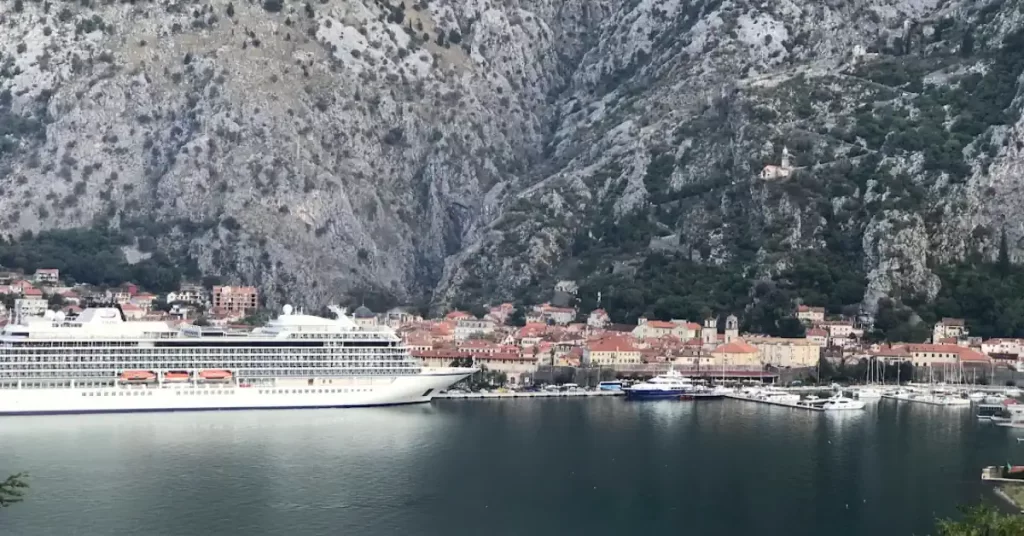
History of Kotor
Find out more about Kotor’s tumultuous history. In the course of centuries, Kotor became an important trading outpost within the Venetian Republic’s trade network.
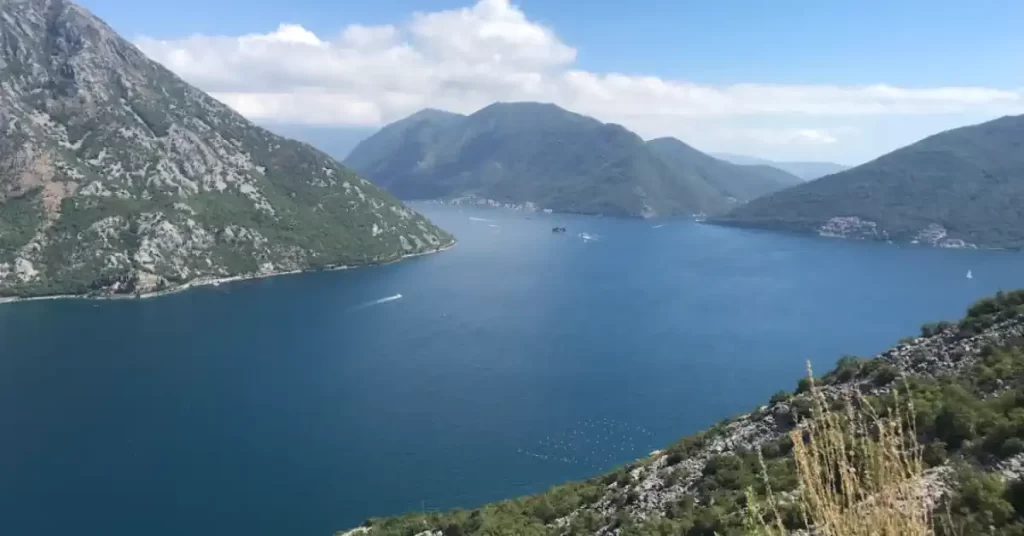
Bay of Kotor
The Inner Bay of Kotor is listed as a UNESCO World Heritage Site and it is easy to see why: Incredible landscapes and charming coastal towns make it a real treasure.
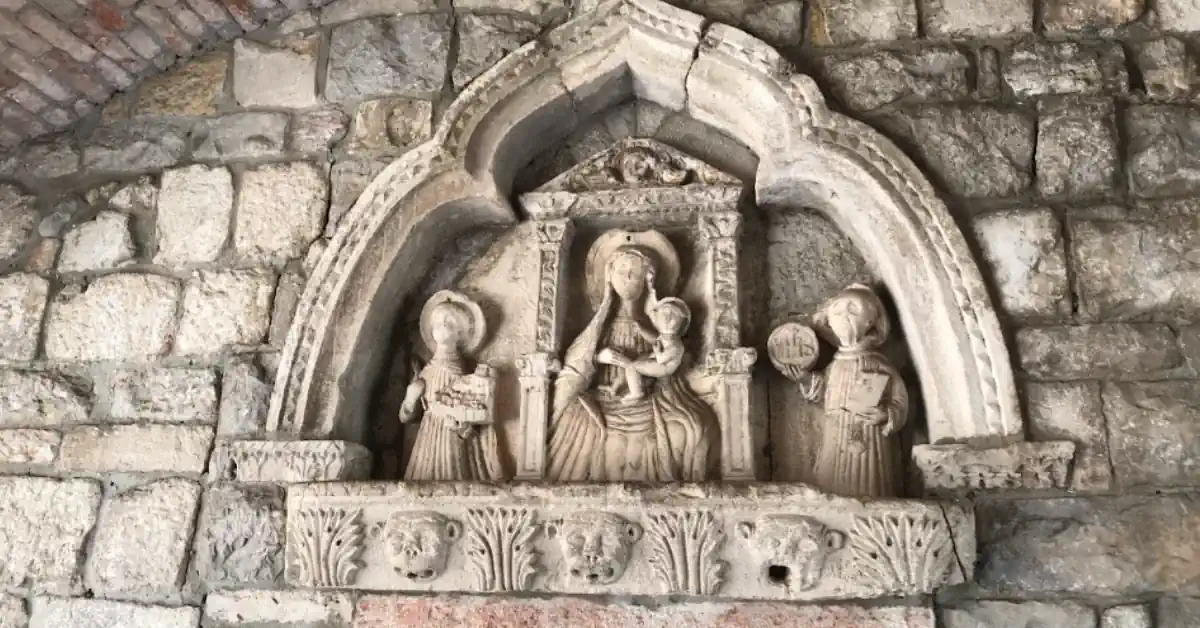
The gate is supported by Renaissance-style columns, and there are two metal cannons guarding the main entrance to the old town. On the inner side of the vaulted passage, you will find a beautiful 15th-century stone relief, depicting the Blessed Virgin Mary with Jesus, surrounded by Saint Tryphon and Saint Bernard.
The gate opens onto the Square of Arms, Kotor’s main town square that houses important historical landmarks such as the clock tower from 1602. From the Sea Gate, the city walls resume north and south around the Kampana Tower and the Gurdic Bastion, anchored by Mount Lovcen to one side and the Scurda River to the north.
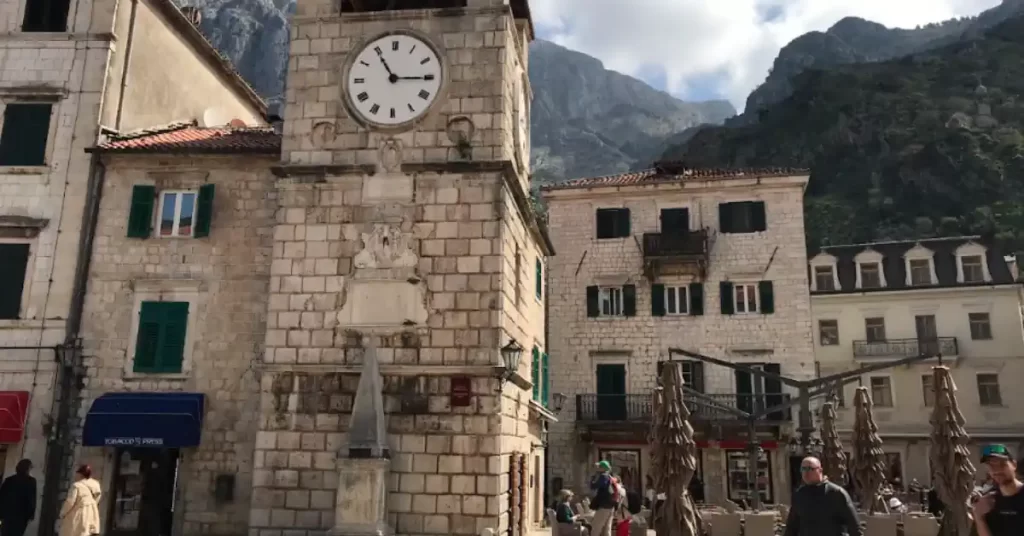
Square of Arms
The Square of Arms is the largest square within the walled city of Kotor. Back in Venetian times, munitions and arms were stored here.
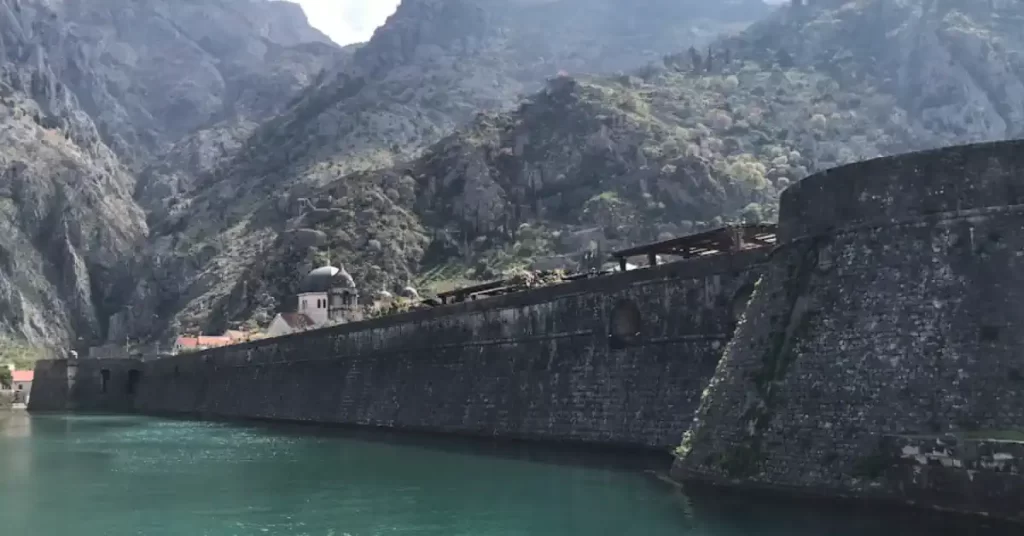
Kampana Tower
The Kampana Tower is a bulky and oblique bastion and sits at the north-western edge of Kotor, guarding the entrance to the harbor and the old town.

If you are visiting Kotor’s Old Town for the first time, this is probably the gate through which you will enter. The Sea Gate is within footwalk distance of the cruise port and almost all city tours start in front of it. Riva Square also plays host to the annual Kotor Christmas Market and the New Year celebrations.

Kotor Old Town
Kotor’s Old Town is a maze of narrow cobblestone streets and town squares filled with an abundance of restaurants, lively bars, and trendy cafes.
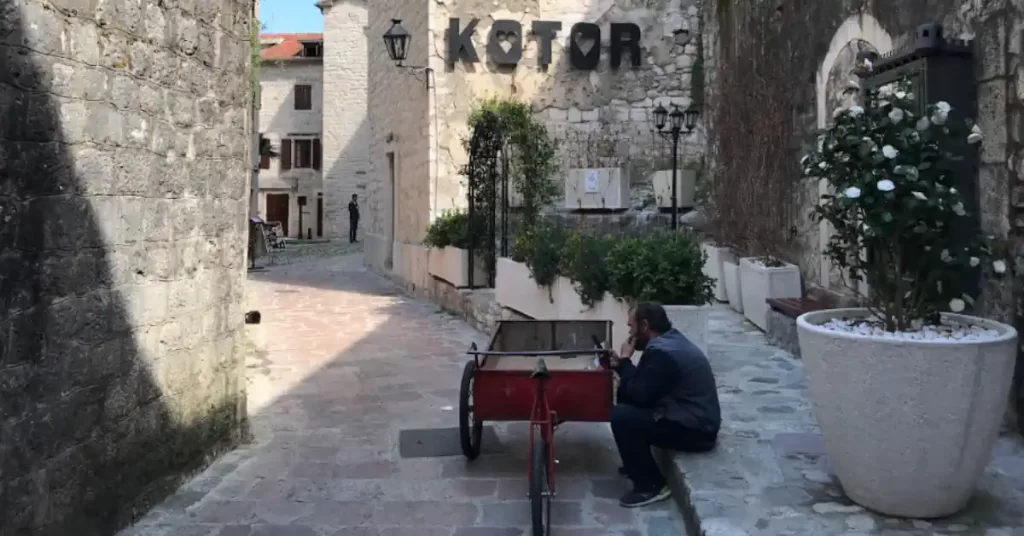
Things to do in Kotor
Did you know that Kotor had a cat museum or that you can take a cable car up Mount Lovcen? Read further to find out more about the best things to do in Kotor.
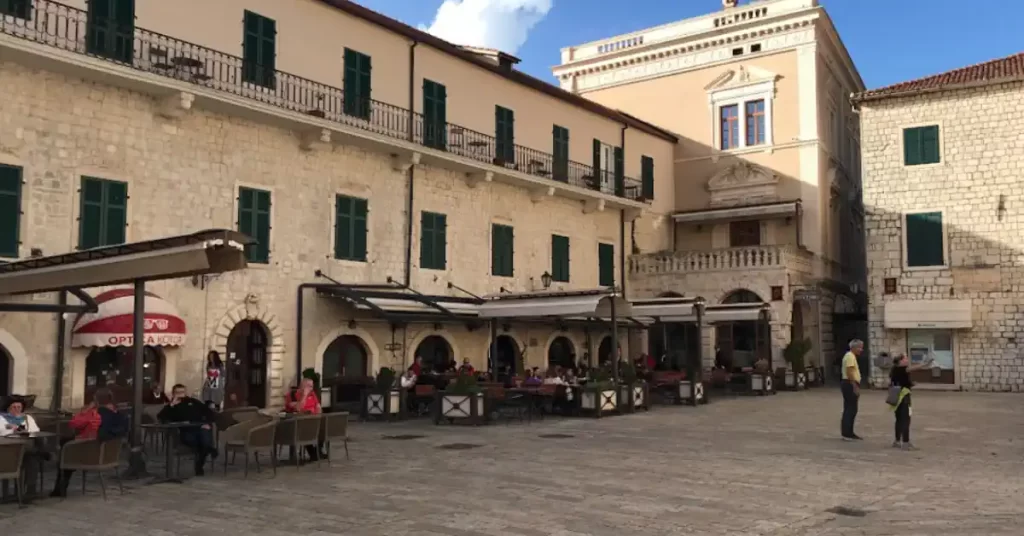
Best Restaurants in the Old Town
Kotor’s Old Town Restaurants offer Adriatic and International cuisine amidst the labyrinth of narrow lanes that characteri\e the Kotor’s historic centre.

Best Breakfast Spots in Kotor
Whether it’s just a croissant with a cup of coffee or a savory egg breakfast, read further to discover where to find the best breakfast spots in Kotor.
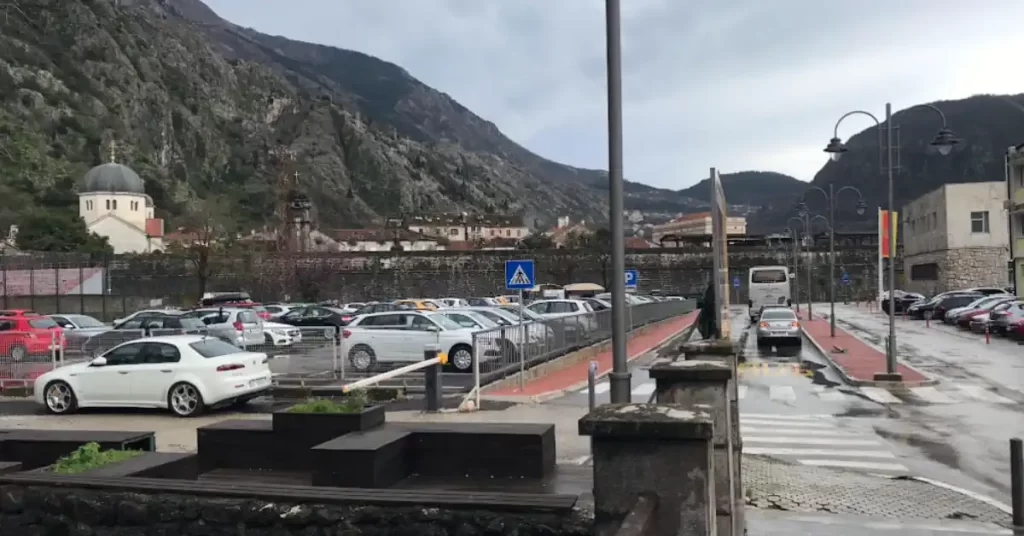
Where to Park in Kotor
Our Kotor Parking Guide contains lots of useful information for finding the perfect parking space around the old town, for cars, motorbikes, and larger vehicles.